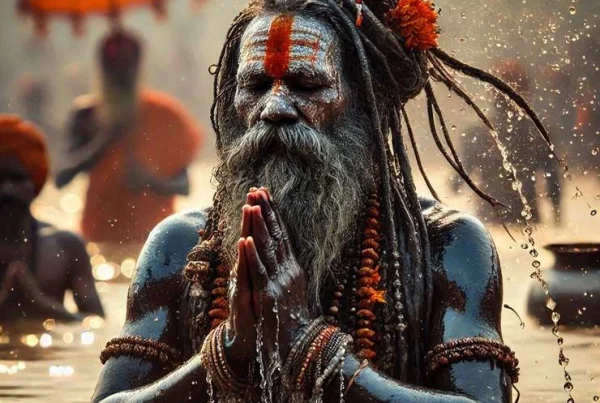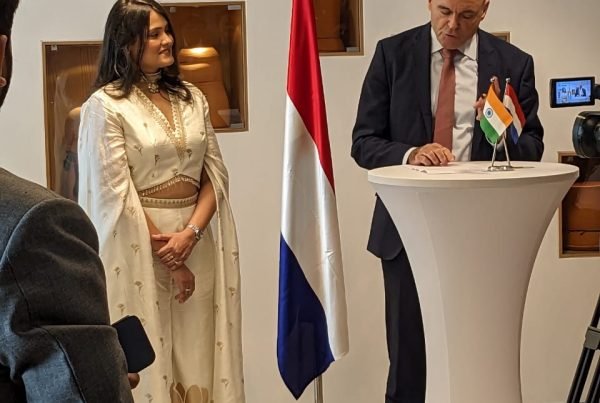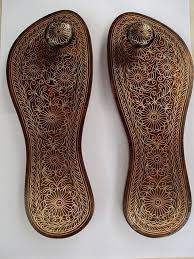 Padukas – the Indian wooden shoes🥿 that were worn in the ancient times and mainly by sages and saints. These are flat wooden slippers with only a post and a knob for a grip between the first two toes of the feet. Padukas are of holy importance in India and one such significance dates back to the period of Lord Rama. When Lord Rama (a human form of Lord Vishnu) was ordered an exile for 14 years, his padukas were worshipped and kept on the throne 👑by his brother Bharata who refused to take his beloved brother’s place.
Padukas – the Indian wooden shoes🥿 that were worn in the ancient times and mainly by sages and saints. These are flat wooden slippers with only a post and a knob for a grip between the first two toes of the feet. Padukas are of holy importance in India and one such significance dates back to the period of Lord Rama. When Lord Rama (a human form of Lord Vishnu) was ordered an exile for 14 years, his padukas were worshipped and kept on the throne 👑by his brother Bharata who refused to take his beloved brother’s place.
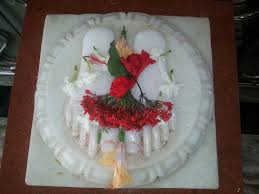 These wooden slippers were also worn because animals, especially cows, are revered in India. 🙏Handcrafting leather shoes involved harming animals which was against the Hindu religion. FUN FACT – But did we know that apart from Abraham Lincoln and his father, even Mahatma Gandhi learnt how to handicraft shoes? One such incidence is while he was boarding a train 🚆and one of his shoes slipped off landing on the tracks. Unable to get back the shoe, he threw the other shoe on the same track in order to help the needy who could now wear his pair of abandoned shoes.
These wooden slippers were also worn because animals, especially cows, are revered in India. 🙏Handcrafting leather shoes involved harming animals which was against the Hindu religion. FUN FACT – But did we know that apart from Abraham Lincoln and his father, even Mahatma Gandhi learnt how to handicraft shoes? One such incidence is while he was boarding a train 🚆and one of his shoes slipped off landing on the tracks. Unable to get back the shoe, he threw the other shoe on the same track in order to help the needy who could now wear his pair of abandoned shoes.
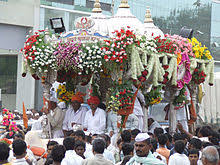 Padukas are worshipped in India and are also considered to be footprints of Gods (Vishnu and Shiva). 👣 FUN FACT – There is a Dyaneshwar Paduka Chowk (a junction) in Pune named after the saint Dnyaneshwar. His padukas are carried in a palkhi (palanquin processions) from Alandi (in Pune) to Pandharpur.
Padukas are worshipped in India and are also considered to be footprints of Gods (Vishnu and Shiva). 👣 FUN FACT – There is a Dyaneshwar Paduka Chowk (a junction) in Pune named after the saint Dnyaneshwar. His padukas are carried in a palkhi (palanquin processions) from Alandi (in Pune) to Pandharpur.
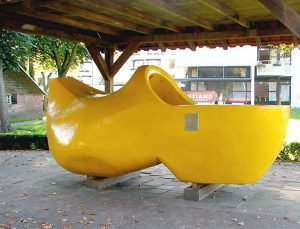 Klompen meaning wooden shoes is one of the quintessential symbols of The Netherlands. Nederland is an agricultural country with approximately 50% of its land just 1% above sea level 🌊and a lot of reclaimed land. Wearing leather shoes in the earlier days seemed unaffordable and mainly a symbol of the elite class, unlike klompen which were handmade and sturdy. FUN FACT – Did we know that the traditional klompen have been CE-certified? The largest clog ever made had also caught fire! 🥶
Klompen meaning wooden shoes is one of the quintessential symbols of The Netherlands. Nederland is an agricultural country with approximately 50% of its land just 1% above sea level 🌊and a lot of reclaimed land. Wearing leather shoes in the earlier days seemed unaffordable and mainly a symbol of the elite class, unlike klompen which were handmade and sturdy. FUN FACT – Did we know that the traditional klompen have been CE-certified? The largest clog ever made had also caught fire! 🥶
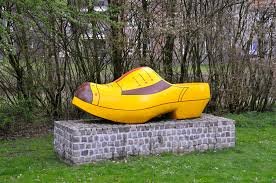 Clogs were cheap and mainly worn by farmers, fishermen and labourers. FUN FACT – On an average a klompenmaker (clog maker) could make up to six pairs in a day. 😰These would protect their feet from sea insects and other harmful objects. Now, dat kun je op je klompen aanvoelen! (Used when something is really obvious and apparent.) FUN FACT – The oldest wooden shoe is said to have been from the year 1230 in the Nieuwendijk in Nederland, though clogs are presumed to have originated from France.
Clogs were cheap and mainly worn by farmers, fishermen and labourers. FUN FACT – On an average a klompenmaker (clog maker) could make up to six pairs in a day. 😰These would protect their feet from sea insects and other harmful objects. Now, dat kun je op je klompen aanvoelen! (Used when something is really obvious and apparent.) FUN FACT – The oldest wooden shoe is said to have been from the year 1230 in the Nieuwendijk in Nederland, though clogs are presumed to have originated from France.

 Clogs were also commonly worn in dance. 🩰The beat of a wooden shoe against the floor gave rhythm to the dance. Mmm, boeiend (exciting and fascinating), maybe with some wijn of koffie met een klomp ijs (wine or coffee with an ice cube)! Apart from warmth and protection clogs were known for its use till the very last minute. Once the shoes would wear off, they were used in the fireplace. 🔥Have you ever used your klompen as a flower pot or a bird nest or may be a pen-tray or bookend? FUN FACT – A klompvis (sunfish) is one of the heaviest known bony fishes in the world which can even weigh up to 1000 kg. Nu breekt mijn klomp! (Used when a person is extremely shocked or surprised or when something is not really expected.)😱
Clogs were also commonly worn in dance. 🩰The beat of a wooden shoe against the floor gave rhythm to the dance. Mmm, boeiend (exciting and fascinating), maybe with some wijn of koffie met een klomp ijs (wine or coffee with an ice cube)! Apart from warmth and protection clogs were known for its use till the very last minute. Once the shoes would wear off, they were used in the fireplace. 🔥Have you ever used your klompen as a flower pot or a bird nest or may be a pen-tray or bookend? FUN FACT – A klompvis (sunfish) is one of the heaviest known bony fishes in the world which can even weigh up to 1000 kg. Nu breekt mijn klomp! (Used when a person is extremely shocked or surprised or when something is not really expected.)😱
Let’s have a look at how these wooden shoes are made.


